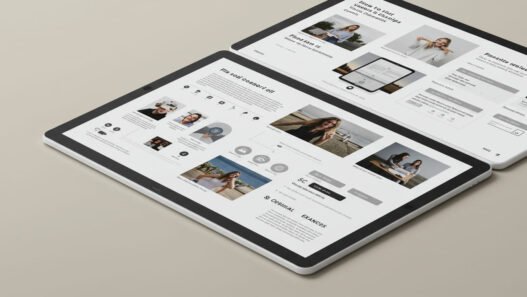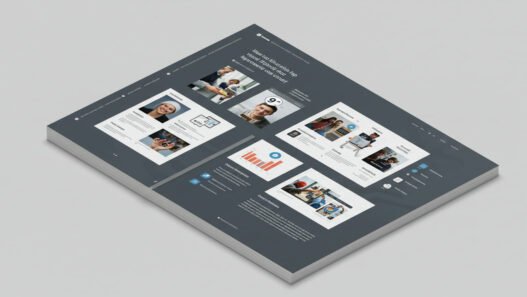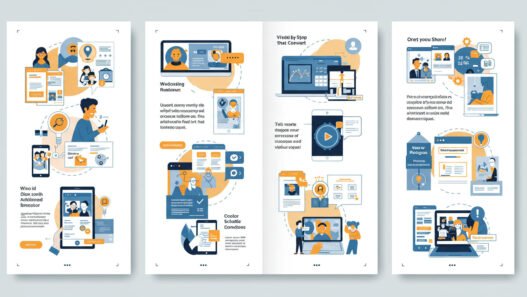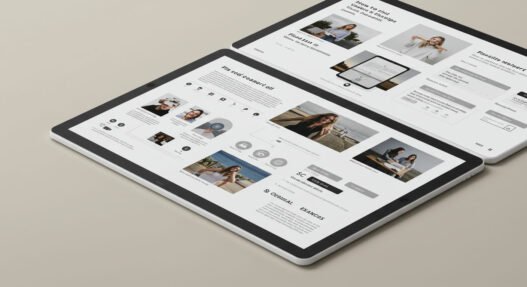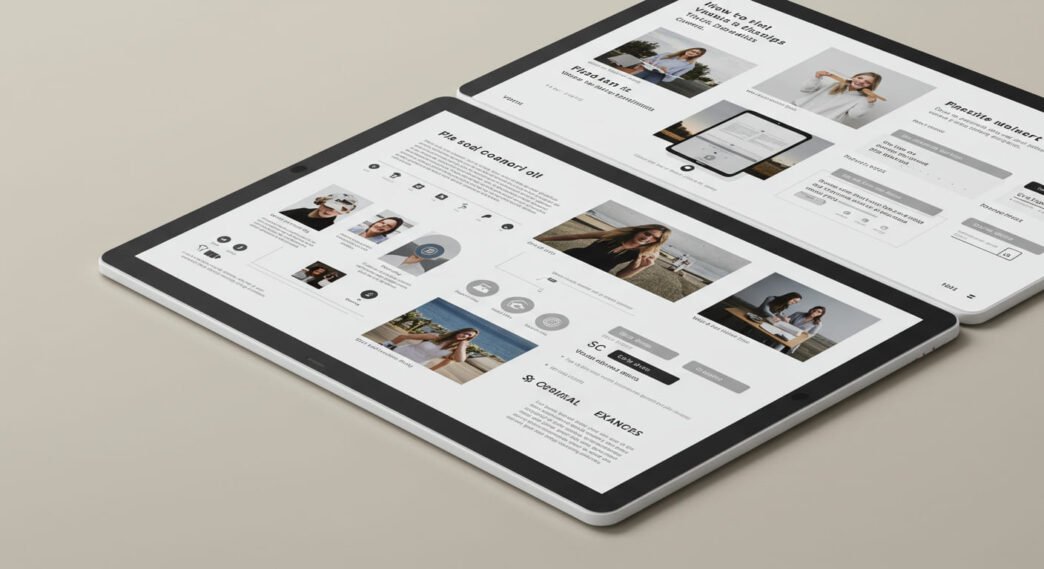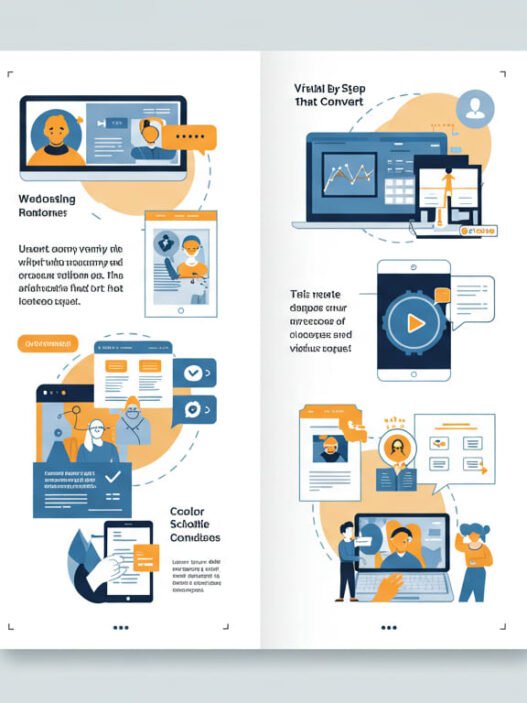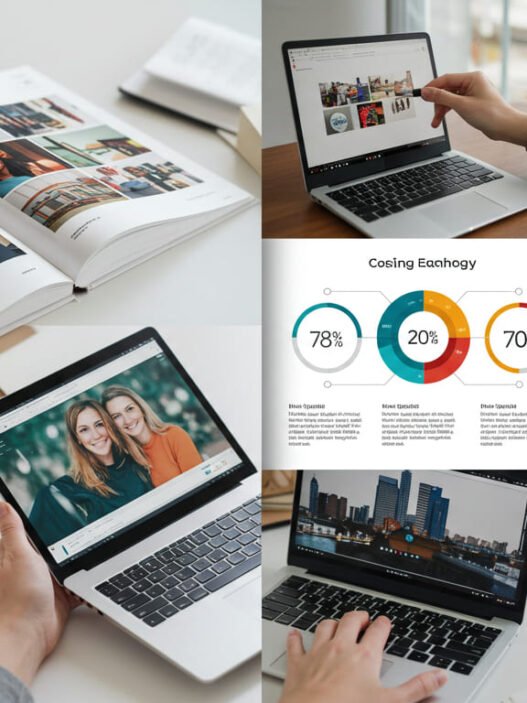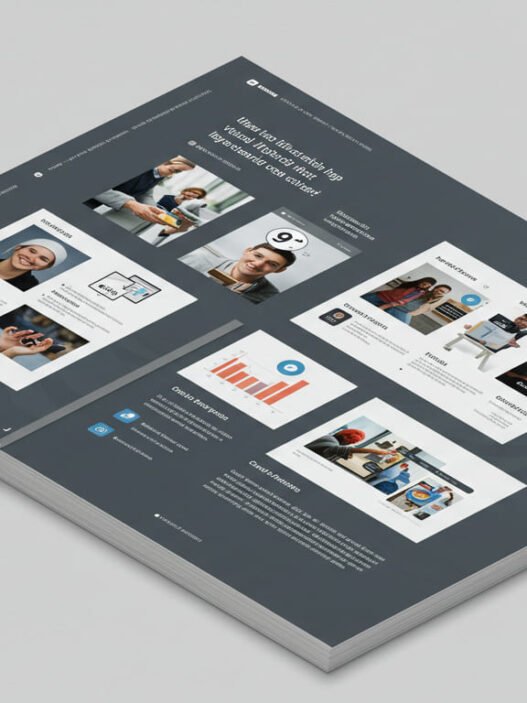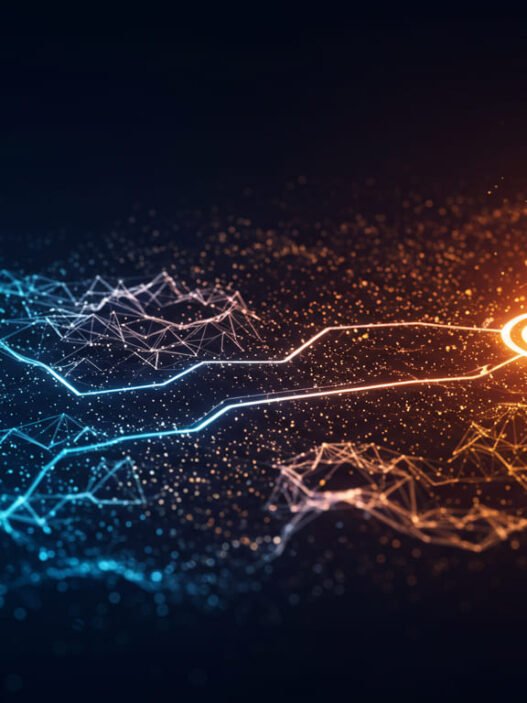How to Use Color Psychology in Design
The moment a customer encounters your design, their brain processes color information in just 90 milliseconds—faster than they can read a single word or consciously evaluate your message. This split-second color assessment triggers emotional responses, influences purchasing decisions, and determines whether someone will engage with your content or scroll past it forever. Yet most designers treat color as purely aesthetic decoration rather than the powerful psychological tool it truly represents. Whether you’re designing websites, creating social media graphics, or crafting email marketing campaigns that demand attention in crowded inboxes, understanding color psychology transforms your design approach from hopeful creativity into strategic communication that predictably influences human behavior.
The world’s most successful brands didn’t choose their signature colors randomly—they selected hues that psychologically reinforce their brand positioning and desired customer actions. Coca-Cola’s passionate red creates excitement and urgency that drives impulse purchases, while Facebook’s trustworthy blue encourages personal information sharing and social connection. These color choices work because they align with fundamental neurological responses that exist across cultures and demographics. When you master color psychology principles, every design decision becomes an opportunity to guide emotions, build trust, and motivate specific behaviors through scientifically-backed visual communication strategies. The most effective email marketing campaigns leverage these same psychological triggers to stand out in recipients’ inboxes and drive higher engagement rates than generic, color-uninformed alternatives.
The Neuroscience Behind Color Perception and Response
Color perception begins in the eye but creates its most powerful effects in the brain’s limbic system, where emotional processing occurs faster than rational thought. When light wavelengths hit your retina, they trigger not just visual recognition but also hormonal responses, memory associations, and behavioral predispositions that influence decision-making at subconscious levels. This neurological process explains why certain color combinations feel naturally harmonious while others create tension or discomfort, even when viewers can’t articulate why they have these reactions.
Research conducted by the Institute for Color Research reveals that people make subconscious judgments about products within 90 seconds of initial viewing, and between 62% and 90% of that assessment is based on color alone. This finding revolutionizes how we should approach design across all mediums, from retail environments to digital interfaces to email marketing templates that need to create positive first impressions instantly. The implications extend beyond aesthetic preferences into measurable business outcomes, as color-optimized designs consistently outperform color-neutral alternatives in conversion testing.
Different colors trigger distinct neurochemical responses that affect mood, energy levels, and decision-making capabilities. Red increases heart rate and creates urgency, which explains its effectiveness in clearance sales and limited-time promotions, while blue promotes feelings of trust and stability that make it ideal for financial services and professional communications. Green activates the brain’s reward center and reduces eye strain, making it perfect for call-to-action buttons and extended reading experiences. Understanding these physiological responses allows designers to select colors that support their content’s intended emotional journey rather than working against natural psychological tendencies.
Cultural and personal associations also influence color psychology, creating layers of meaning that vary across different audiences and contexts. While red symbolizes good fortune and celebration in Chinese culture, it can represent danger or aggression in Western contexts. Successful global brands like McDonald’s and KFC adapt their color strategies for different markets while maintaining core brand recognition, demonstrating how cultural sensitivity enhances rather than restricts effective color psychology applications.
Strategic Color Selection for Different Design Goals
Effective color selection begins with clearly defining your design’s primary objective and then choosing hues that psychologically support that goal through established emotional associations and behavioral triggers. Trust-building designs benefit from blues and greens that convey reliability and stability, while attention-grabbing designs leverage reds and oranges that create excitement and urgency. The key lies in understanding which emotional state will most effectively motivate your desired user actions.
Conversion-focused designs require color strategies that guide attention through specific visual hierarchies while reducing psychological barriers to action. Amazon’s strategic use of orange for their primary action buttons creates warmth and enthusiasm that encourages purchases, while their blue accents build trust in the transaction process. This dual-color approach addresses both emotional motivation and security concerns that influence online purchasing decisions. Similar principles apply to email marketing campaigns where color choices can significantly impact open rates, click-through rates, and ultimate conversion performance.
Brand differentiation through color requires understanding your competitive landscape and selecting hues that distinguish your offerings while appealing to your target audience’s psychological preferences. When Spotify chose their distinctive green, they differentiated themselves from competitors using blue (Facebook), red (YouTube), and purple (Yahoo) while selecting a color that represents growth, harmony, and positive energy—perfect associations for a music discovery platform. This strategic color positioning helps customers instantly recognize and recall Spotify across various touchpoints and marketing communications.
Accessibility considerations add another layer to strategic color selection, as designs must remain effective for users with color vision differences while maintaining their psychological impact. The most inclusive color strategies rely on contrast, saturation, and brightness variations rather than hue alone to communicate important information. This approach actually enhances color psychology effectiveness by creating designs that work through multiple visual channels simultaneously, ensuring your intended emotional responses reach the widest possible audience.
Color Combinations That Create Emotional Impact
Single colors create basic emotional responses, but color combinations generate complex psychological experiences that can significantly amplify or modify individual color effects. Complementary colors—those opposite each other on the color wheel—create visual tension and energy that demands attention, making them ideal for designs that need to interrupt routine browsing behaviors. The classic combination of blue and orange appears frequently in email marketing campaigns because it balances trust-building blue with action-motivating orange, creating psychological conditions that encourage both engagement and conversion.
Analogous color schemes use neighboring hues to create harmony and comfort, perfect for designs that need to feel approachable and easy to process. These combinations work particularly well for educational content, wellness brands, and user interfaces where reducing cognitive load improves user experience. Instagram’s gradient logo evolution from a detailed camera icon to simplified gradient hues demonstrates how analogous color combinations can modernize brand perception while maintaining recognition and positive associations.
Triadic color combinations use three evenly spaced colors to create vibrant, balanced designs that feel energetic without overwhelming viewers. Google’s primary color palette—blue, red, yellow, and green—exemplifies successful triadic application that conveys playfulness, inclusivity, and innovation while maintaining professional credibility. This color strategy supports Google’s brand positioning as an approachable technology company that makes complex capabilities feel simple and accessible to everyone.
Monochromatic color schemes explore different shades, tints, and tones of a single hue to create sophisticated, cohesive designs that feel premium and intentional. Luxury brands frequently employ monochromatic approaches because they suggest refinement and attention to detail while avoiding the visual complexity that might detract from product focus. Apple’s predominantly white and silver aesthetic creates associations with cleanliness, precision, and premium quality that justify higher price points and build brand prestige.
Cultural Considerations in Color Psychology
Color psychology varies significantly across cultures, requiring designers to understand their audience’s cultural backgrounds and adapt color strategies accordingly. What triggers positive emotional responses in one culture might create negative associations or confusion in another, making cultural awareness essential for effective global design and email marketing campaigns that reach diverse audiences. These differences extend beyond obvious examples like red’s varying symbolism to include subtle preferences for saturation levels, color combinations, and contextual appropriateness.
Western cultures typically associate white with purity, cleanliness, and new beginnings, making it popular for wedding dresses and minimalist design aesthetics. However, many Eastern cultures view white as a symbol of mourning and death, preferring red for celebratory occasions and good fortune. These fundamental differences require thoughtful adaptation when expanding design strategies internationally or targeting multicultural audiences within single markets.
Religious and spiritual associations also influence color psychology across different communities. Islamic cultures often favor green due to its religious significance, while Hindu traditions associate saffron orange with spirituality and enlightenment. Understanding these deeper cultural connections allows designers to create more resonant experiences that feel personally meaningful to specific audience segments rather than generically appealing.
Economic and social factors within cultures affect color preferences and psychological responses in ways that demographic data alone cannot predict. Urban audiences might respond differently to nature-inspired green palettes than rural communities, while economic stress can influence preference for colors associated with luxury versus practicality. Successful email marketing campaigns often segment audiences not just by demographics but by psychographic and cultural preferences that include color psychology considerations.
Practical Applications Across Different Design Mediums
Web design color psychology requires understanding how colors perform across different devices, lighting conditions, and user contexts while maintaining psychological effectiveness. Screen colors appear differently than print colors, and mobile viewing often occurs in varied lighting situations that affect color perception and emotional response. Successful web designers test their color choices across multiple devices and conditions to ensure consistent psychological impact regardless of technical variations.
Digital interfaces benefit from color psychology applications that reduce cognitive load while guiding user attention through complex information hierarchies. Netflix uses red strategically to create excitement around entertainment content while employing darker backgrounds that reduce eye strain during extended viewing sessions. Their color choices support both immediate emotional engagement and sustained user comfort, demonstrating how psychological principles can address multiple design objectives simultaneously.
Print design color psychology must account for different color reproduction capabilities and viewing contexts while maintaining the intended emotional impact. Email marketing materials that transition from digital to print formats require color adaptations that preserve psychological effectiveness across mediums. Pantone color matching systems help maintain consistency, but designers must also consider how color psychology principles translate between backlit screens and reflected light environments.
Packaging design represents one of the most critical applications of color psychology, as purchase decisions often occur within seconds of visual contact. Successful packaging colors create immediate emotional connections while communicating product benefits and brand positioning without requiring text processing. Feminine hygiene products often use purple to convey comfort and luxury, while energy drinks leverage bold reds and yellows to suggest power and alertness.
Testing and Optimizing Color Choices for Maximum Impact
Color psychology effectiveness varies across different audiences and contexts, making systematic testing essential for optimizing emotional impact and behavioral outcomes. A/B testing different color variations reveals which hues, combinations, and applications generate better engagement rates, conversion metrics, and user satisfaction scores within your specific audience and use cases. This data-driven approach transforms color psychology from theoretical knowledge into practical competitive advantages.
Heat mapping tools reveal how color choices influence user attention patterns and interaction behaviors on websites and digital platforms. These insights help designers understand whether their color strategies successfully guide user focus toward desired actions or inadvertently create visual barriers that impede conversion processes. Email marketing campaigns benefit particularly from color testing, as small improvements in visual hierarchy can significantly impact click-through rates and revenue generation.
Customer feedback and surveys provide qualitative insights into how color choices affect emotional responses and brand perceptions among real users. While quantitative testing reveals what happens, qualitative research explains why certain colors perform better and how they align with audience preferences and psychological needs. This deeper understanding enables more strategic color decisions that serve long-term brand building alongside immediate performance optimization.
Long-term color performance analysis tracks how psychological responses to specific colors change over time within your audience and industry context. Color trends evolve, and what feels fresh and engaging today might appear dated or ineffective in future periods. Successful brands balance timeless color psychology principles with contemporary aesthetic preferences, creating designs that feel current while maintaining proven psychological effectiveness.
The mastery of color psychology in design represents far more than aesthetic enhancement—it’s the strategic application of scientific understanding to create emotional experiences that motivate desired behaviors and build lasting connections between brands and audiences. When designers approach color selection through psychological principles rather than personal preferences, they transform visual communications from hopeful creativity into predictable influence systems that serve both user needs and business objectives. The investment in understanding and applying color psychology pays dividends through improved engagement rates, stronger emotional connections, and ultimately more successful design outcomes that contribute measurably to organizational success and customer satisfaction.




